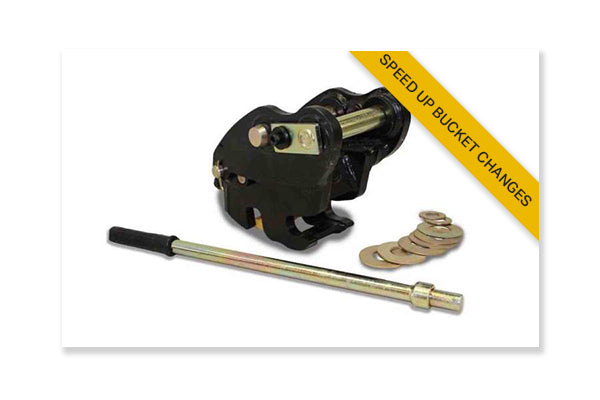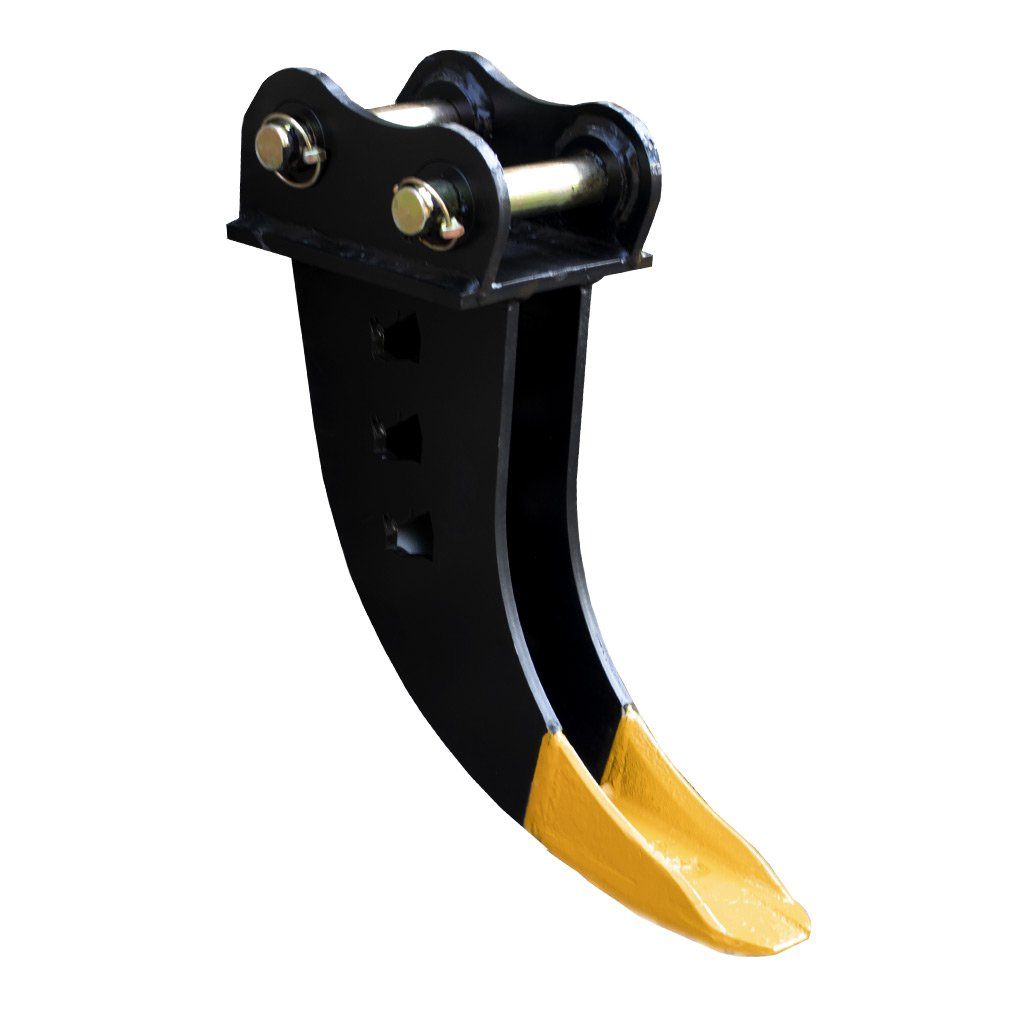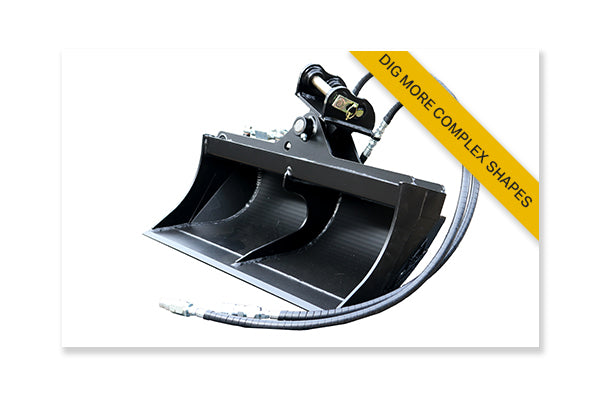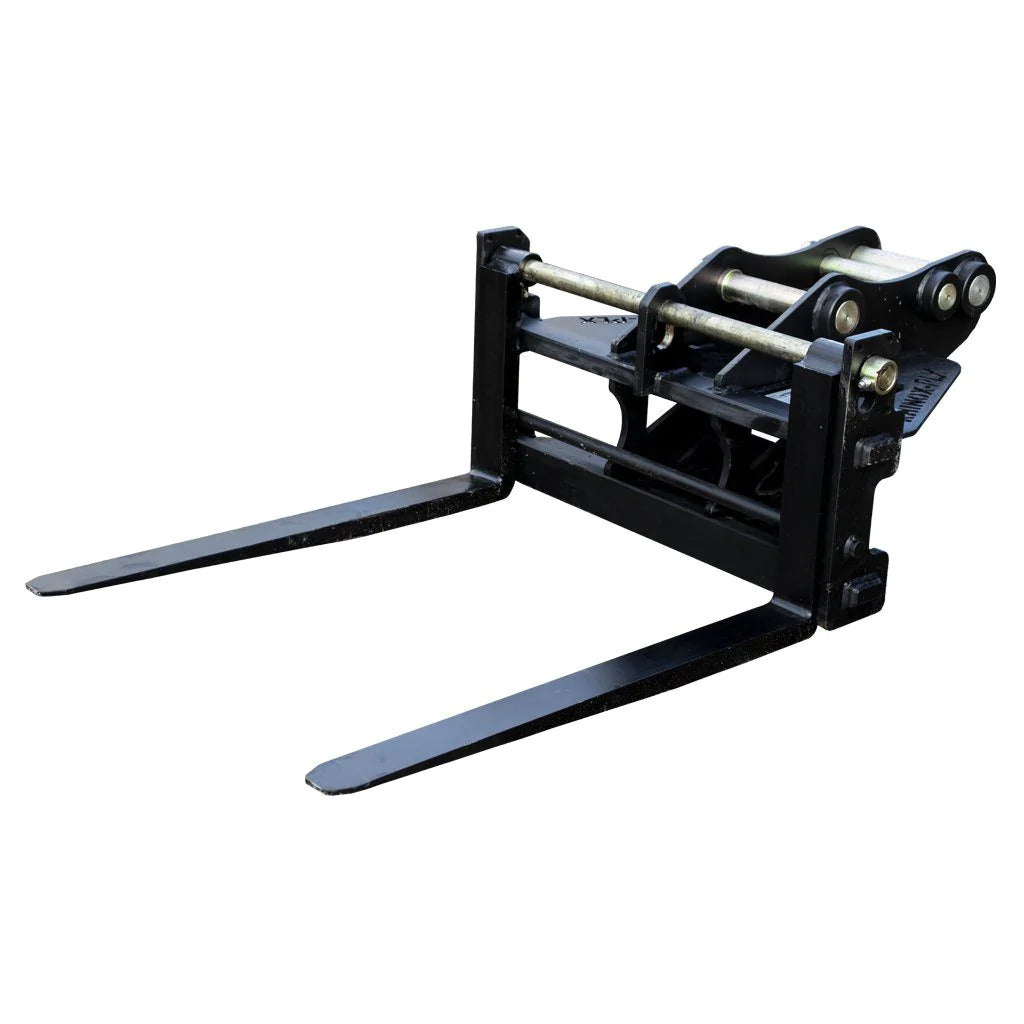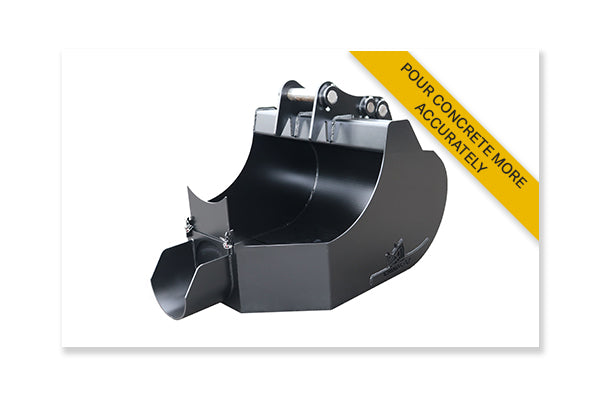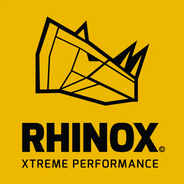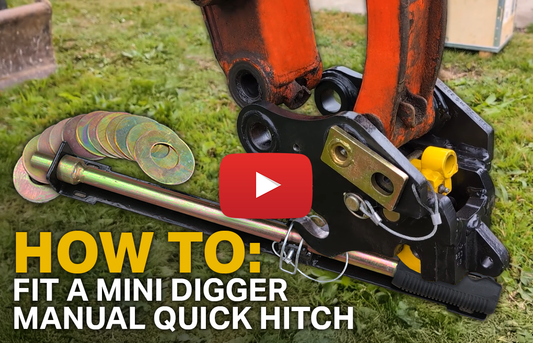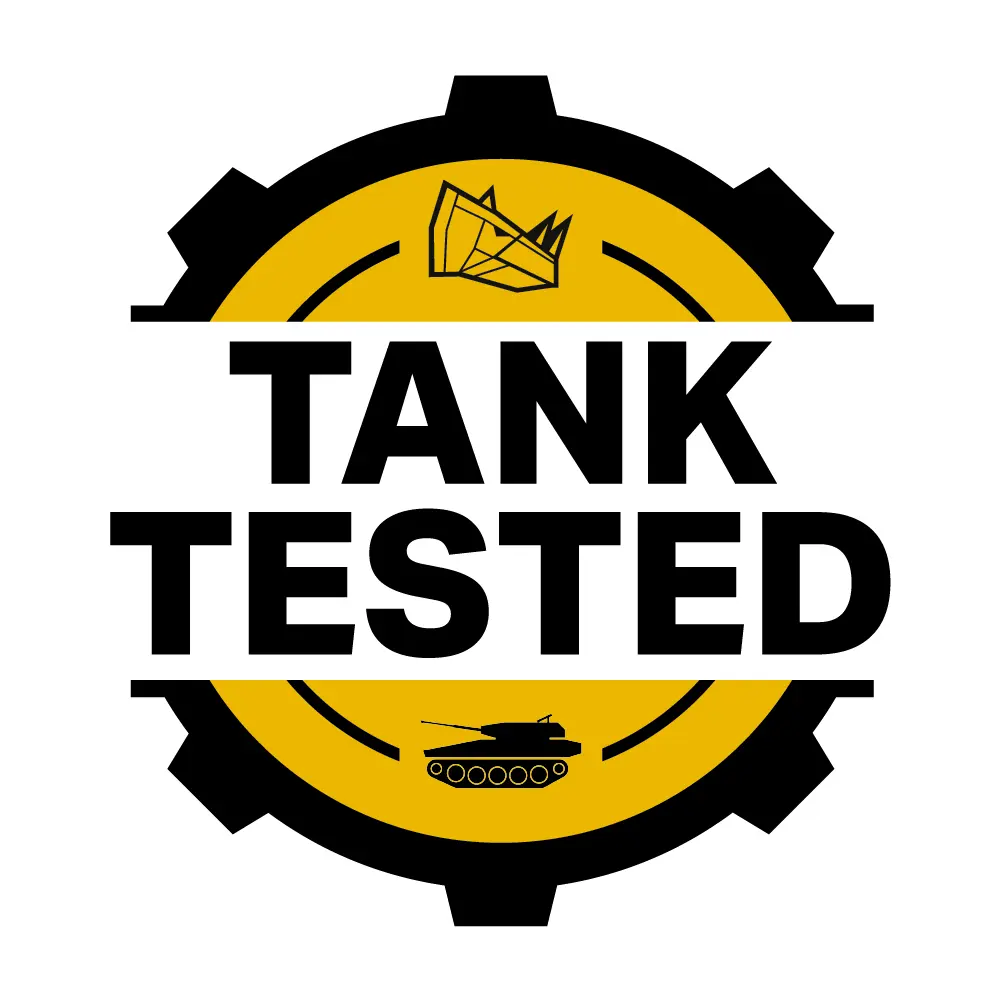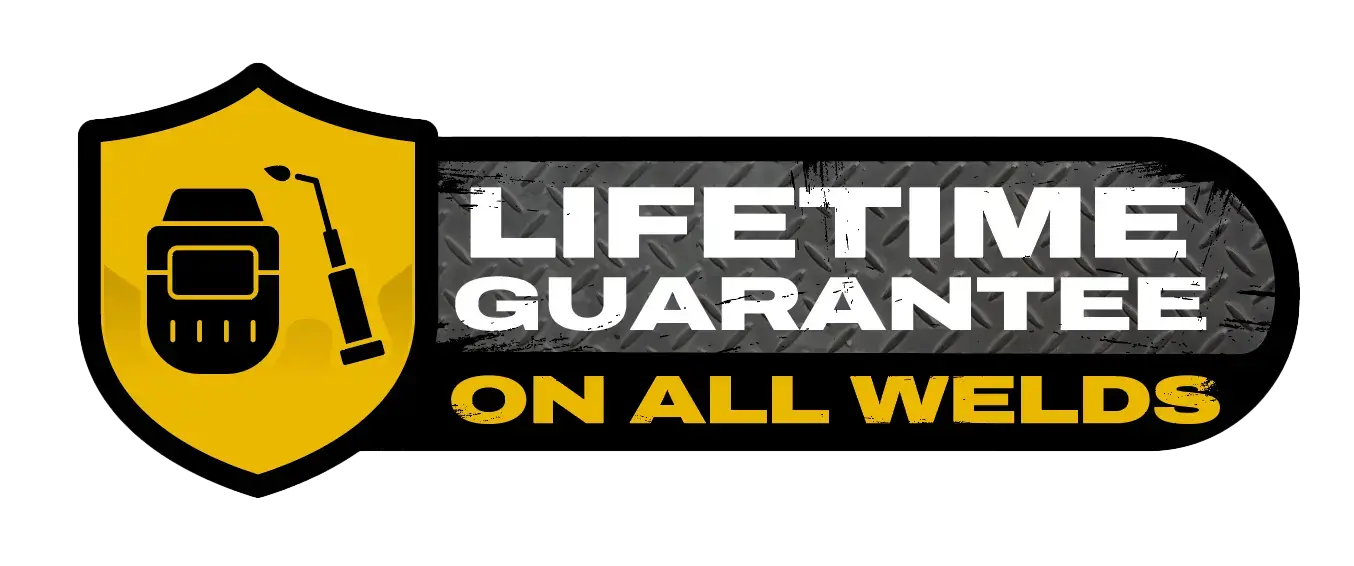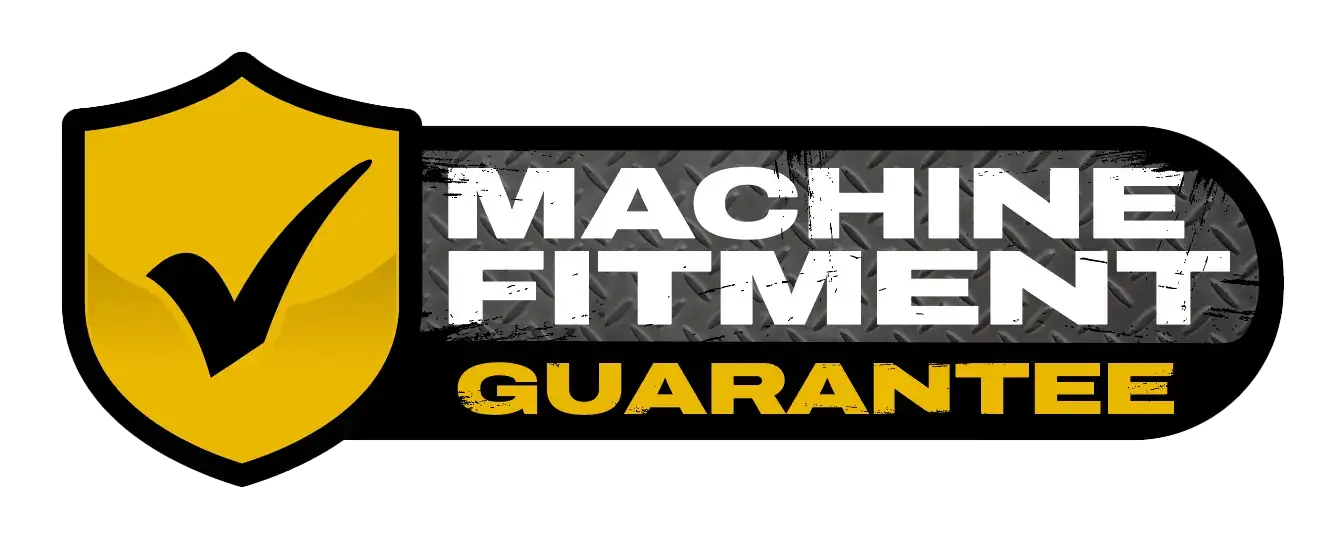
Blog Contents:
- What are excavator pallet forks used for?
- Are pallet forks cost-effective compared to telehandlers or forklifts?
- Are pallet forks universal?
- What is the difference between fixed and floating pallet forks?
- How to use pallet forks
- Features of Rhinox Excavator Pallet Forks
- Where can I purchase excavator pallet forks?
Guide to Excavator Pallet Forks
If you’re looking to increase the versatility of your excavator, pallet forks are a must-have excavator attachment. Designed to lift, move and transport heavy loads with ease, these attachments transform your excavator into a multifunctional machine, making material handling faster and more efficient. In this guide, we’ll explore what pallet forks are, their benefits, how to use them, and why Rhinox pallet forks stand out in the market.

What are excavator pallet forks used for?
Pallet forks are an excavator attachment that enables your excavator to transport palletised loads, construction materials and any other items that would usually require a forklift or telehandler.
The main benefit of using excavator pallet forks is the increased versatility they give your machine, allowing you to handle tasks across construction sites, farms and industrial jobs. They are ideal for transporting pallets, timber, concrete blocks, containers, steel beams, pipes and landscaping supplies. Excavator pallet fork attachments are especially useful on small, complex or boggy sites where a telehandler cannot fit or a forklift cannot operate. Your excavator can track across uneven, muddy ground and reach awkward areas with ease, such as bringing pallets of bricks around the foundations of a new build house.
Are pallet forks cost-effective compared to telehandlers or forklifts?
Excavator pallet forks are an extremely cost-effective alternative to hiring or purchasing a telehandler or forklift, especially for operators who already own an excavator. Rather than investing in an entirely separate machine or paying ongoing hire fees, you can simply add a pallet fork attachment to your excavator. This one-time investment allows your excavator to handle lifting tasks whenever needed, saving significant money over time.

Beyond the obvious cost savings, pallet forks dramatically increase the versatility of your excavator, allowing you to lift and move pallets, stillages and other materials from Point A to Point B with just a quick change of your excavator attachment. Operators have used them to transport everything from pallets of animal feed, plaster mix and concrete, to stillages of straw, rubber tyres and even small containers of cement, making them equally useful for loading and unloading deliveries.
Excavator pallet forks are especially valuable on smaller or uneven sites where manoeuvrability is important. While dedicated machines like telehandlers or forklifts may be more efficient for lifting at height, excavator pallet forks provide a flexible, cost-saving solution for lifting tasks in complex, wet and muddy terrain.
Another major advantage is that your excavator isn’t sitting idle. If you were to operate separate machines for digging and lifting, chances are one would often be underutilised. With pallet forks, your excavator can perform both tasks, reducing downtime and ensuring every machine on-site is productive.

Maintenance is also simpler with excavator pallet forks. By relying on your excavator for multiple tasks, you only need to manage one machine. While wear on the undercarriage and routine upkeep of the pallet fork attachment should be considered, overall maintenance is more straightforward and economical than managing multiple pieces of equipment, saving both time and money.
Ultimately, the pallet fork attachment offers a flexible, practical and cost-saving solution for lifting tasks. With 360° rotation and excellent manoeuvrability on soft or uneven surfaces, excavator pallet forks deliver a highly functional alternative to purchasing or hiring a forklift or telehandler, without compromising performance.
Read more about the comparison between using excavator pallet forks over telehandlers and forklifts.
Are pallet forks universal?

No, excavator pallet forks are not universal, and not all pallet forks are interchangeable. While some can be used across a range of different excavators, many are designed to fit specific makes and models. The differences in carriage mounting systems (such as multi-pin pick-up or dedicated pick-up) and the weight ratings can affect whether a pallet fork attachment will work correctly on your excavator. For example, a standard set of 12-25 ton pallet forks will not fit a 12-15 ton or 20-25 ton tiltrotator because the pin dimensions are different.
You should always verify that the pallet fork attachment is suitable for your specific excavator make and model before purchase to avoid hassle. If you're unsure if the attachment is compatible with your excavator, we recommend to get in touch with the attachment manufacturer to check.
What is the difference between fixed and floating pallet forks?
The key difference between fixed and floating pallet forks comes down to how the tines are mounted to the carriage and how they move during use.

Fixed forks are attached to the carriage in two places - at the top and bottom - so they stay in a set orientation, although they can still slide side-to-side along the frame. When the frame is tilted forward, the forks follow the same angle, which can make it harder to position them under pallets or uneven loads without the tines digging into the ground.
Floating forks are attached at a single pivot point on the top of the carriage, allowing them to rotate freely on a bar. They work with gravity to stay level with the ground as the attachment tilts, making it easier to slide under pallets, stillages or containers without spilling material. Floating forks provide greater flexibility for awkward or uneven loads, as the tines naturally adjust to the position of the load. Ultimately, the choice between fixed and floating forks depends on operator preference and the type of work being done, with floating forks generally considered easier to use for careful load handling.
How to use pallet forks
Step 1: Check Working Load Limit. To use pallet forks on your excavator, begin by checking that your machine can safely handle the load by confirming the Working Load Limit on the data plate attached to the carriage.
Step 2: Select Correct Pins. If your pallet fork attachment has multiple pin sizes, select and fit the correct pins for your excavator, storing any unused ones in the rack at the back of the attachment. For forks with a dedicated pick-up, this step isn’t necessary.
Step 3: Mount the Attachment. Mount the forks using either your quick hitch coupler or by direct mounting. If using a quick hitch, align the coupler with the fork hangers, connect and secure it before lifting.
Step 4: Adjust Forks. Adjust the forks to the correct spacing for your load and lock them in place with the fork screws on the top of the fork.
Step 5: Handling Tips. When handling loads, position the forks carefully underneath, avoid driving them into the ground, and lift slowly with controlled movements.
Step 6: Detaching Attachment. To detach, lower the forks to the ground, unlock the quick hitch or remove the pins and disconnect the forks safely. Always follow the manufacturer’s guidelines for lifting capacities and maintenance.
Features of Rhinox Excavator Pallet Forks
Available Pallet Fork Sizes
Rhinox excavator pallet forks are available in a wide range of sizes to suit many of the most popular excavator models in the industry. We manufacture pallet forks to fit excavators from 5 to 25 tons, ensuring there’s a suitable option whether you operate a compact mini digger or heavy-duty construction excavators. We also offer compatibility with dedicated tiltrotator hanger systems, including Steelwrist, Rototilt, Engcon and Kinshofer Nox. Explore our full excavator pallet fork range.
Multi-Pin Pick-up & In-Built Pin Storage
One of the stand-out features of Rhinox 5 to 9 ton and 12 to 25 ton pallet forks are the multi-pin pick-up system. Each set of forks is supplied with interchangeable pins (see table below). This multi-pin design allows you to switch pin sizes, so the same attachment can be used across a range of different excavator models. The in-built pin storage also ensures that unused pins can be safely stored while the attachment is in use. All information about attachment weight and lifting capacities can be found in the table below.
- Rhinox 5 to 9 ton pallet forks are ideal for excavators like the Kubota KX080-4.
- Rhinox 12 to 25 ton pallet forks are designed for heavy machines such as the Hitachi ZX130.
- Rhinox tiltrotator pallet forks are designed for excavators on S60 (12 to 15 ton) or S70 (20 to 25 ton) tilt rotators.
Lifting Capacities & Pallet Fork Weight

The lifting capacity of pallet fork attachments depends on the size of the excavator they’re designed for. Rhinox pallet forks are LOLER-rated and come with clearly marked Working Load Limits (WLL) displayed on the data plate for safe operation. To give you peace of mind, every set of pallet forks purchased from Rhinox comes with a 6 month LOLER Certificate and a Certificate of Conformity, both valid from the date of dispatch. This certification means you can trust that your pallet forks are safe for lifting, quality compliant and ready to perform. See the tables listed below to view the capacity for each Rhinox concrete bucket.
- Rhinox 5 to 9 ton pallet forks have a working load limit of 1,250 kg.
- Rhinox 12 to 25 ton pallet forks have a working load limit of 2,500 kg.
- Rhinox tiltrotator pallet forks have a working load limit of 2,500 kg.
| Compatibility | Bucket Pin Sizes | Attachment Weight | Working Load Limit |
|---|---|---|---|
| 5 to 9 ton Excavator | 45mm, 50mm & 60 mm | 231 kg | 1,250 kg |
| 12 to 25 ton Excavator | 65 mm & 80 mm | 322 kg | 2,500 kg |
| S60 Tiltrotator (12-15 ton) | Fixed Pins | 250 kg | 2,500 kg |
| S70 Tiltrotator (20-25 ton) | Fixed Pins | 277 kg | 2,500 kg |
Heavy-Duty, Reinforced Carriage
Rhinox excavator pallet forks are made from strong structural steel to withstand the demands of tough working environments. The main carriage features a heavy crash plate to add a layer of strength and protection to the bottom half of the carriage as the tines move during use.
Rhinox pallet forks also feature a centre brace bar to support the natural bowing point of the tine bar. The tine bar buckling under heavy loads is a common challenge across the industry, so the Rhinox centre brace provides targeted support to help prevent this issue.
For operator convenience, all essential details, such as attachment weight and lifting capacities, are clearly displayed on the product data plate attached to the carriage, making sure all your essential information is always available when you need it.

Built-in Stand
One of the challenges with excavator pallet forks is that the attachment weight is concentrated at the rear of the attachment, which often causes them to tip backward when detached from the excavator. To solve this issue, Rhinox pallet forks come with a built-in stand. This simple but effective feature prevents the attachment from rocking backward, keeping them upright and stable, which makes reattaching to your excavator quicker and easier.

Adjustable, Floating Forks
Each fork on a set of Rhinox excavator pallet forks measures 47 inches long and 4 inches wide, and is constructed from HB400 heat-treated, hardened steel for superior wear resistance. A standout feature of Rhinox pallet forks is the floating fork design. The forks are connected to the carriage at a single pivot point, which allows them to move with gravity. This 'floating' motion ensures the tines stay level with the ground, making them much easier to slide under pallets and reducing the risk of spilling or dropping loads.
Rhinox pallet fork tines are also fully adjustable, meaning you can manually slide them left or right to change the spacing between tines. This flexibility allows you to adapt quickly to different load sizes and lifting requirements on your jobsite.
Maintenance of your Rhinox Pallet Forks
So, you may be wondering, "how do I maintain and care for my excavator pallet forks?". Fortunately, Rhinox pallet forks are designed to be low-maintenance so minimal maintenance is required, but a little care will go a long way in keeping them in top condition. To ensure smooth operation, we recommend that you keep the tine holes greased so the forks can slide easily along the bar when being adjusted. This isn't an essential task but it will help slow wear from friction over time.
During use, always lower the forks to the ground gently to prevent unnecessary damage to the tines and carriage. It’s also good practice to regularly inspect the forks for signs of excessive wear, loose components or other damage, and address any issues promptly. By following these simple steps, you’ll extend the life of your pallet forks and keep them working safely and reliably.
Where can I purchase excavator pallet forks?
If you’re looking to buy excavator pallet forks, Rhinox makes the process straightforward. Our full range of pallet forks are available directly through the Rhinox website.
By purchasing Rhinox pallet forks, you not only get a high-quality, durable attachment but also benefit from same day dispatch when ordered before 4pm, a lifetime weld guarantee and a machine fitment guarantee for complete peace of mind. Plus, our helpful UK-based sales and customer service teams are on hand Monday to Friday to answer any questions you might have and ensure you find the best attachment for your excavator.

